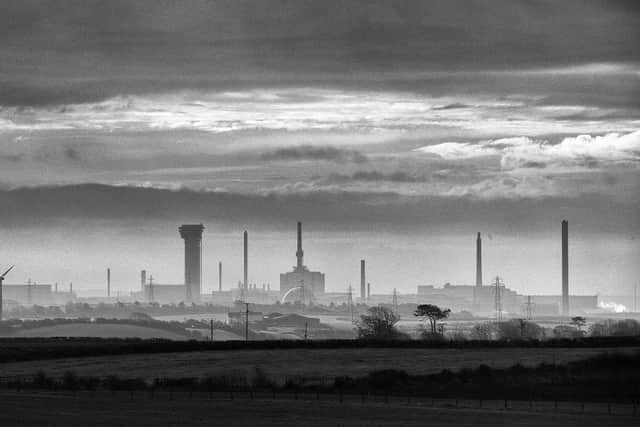Sellafield discharges spark 15-year-high spike in radioactivity levels in Scotland seafood
People eating fish and seafood sourced from the area were exposed to the highest levels of radiation exposure anywhere in Scotland in 2021, amounting to 0.056 millisievert (mSv) per year, according to a new report compiled by regulators.
That is the highest figure since 2007, when the exposure was recorded at 0.06 mSv. In 2020, the reading in the area stood at just 0.027 mSv.
Advertisement
Hide AdAdvertisement
Hide AdRadioactive isotopes identified in the Irish Sea off the south-west coast include americium-241 and caesium-137. Both are what is known as artificial radionuclides, produced by nuclear fission.
The authors of the Radioactivity in Food and the Environment (RIFE) report said the radioactivity levels in the south-west of Scotland were mostly due to the effects of past discharges from the Sellafield nuclear site in Cumbria.
That has sparked calls for a probe into whether there have been any accidental releases from Sellafield, with one veteran environmentalist stating the findings demonstrate “the dangers of the nuclear industry”.
However, regulators said the 0.056 mSv reading amounted to just 6 per cent of the legal limit, which stands at one mSv per year, and stressed that radioactivity levels in food and the environment were “safe”.
The RIFE report, produced annually, also highlighted increases in radioactivity levels around the former Hunterston nuclear power station further up the west coast of Scotland. The latest data shows the total radiation dose exposure was 0.006 mSv in 2021, up from 0.005 mSV the previous year.


The report states the increase is due to the concentration of two isotopes – plutonium 239 and plutonium 240 – in molluscs collected around the site in West Kilbride, North Ayrshire. Gaseous discharges of carbon 14 and sulphur 35 also increased year on year, with liquid discharges of tritium – used as a nuclear fusion fuel – also on the rise.
The Hunterston B nuclear power plant was shut down for the last time in January. The site was expected to remain operational until 2023, but the discovery of hairline cracks found in the graphite bricks which make up its reactor cores hastened its closure.
Elsewhere, the annual total radiation dose at Dounreay increased from 0.009 mSv in 2020 to 0.026 mSv the following year. Those behind the study say the spike is mainly due to the concentration of caesium 137 found in venison, which had not been sampled in previous years.
Advertisement
Hide AdAdvertisement
Hide AdThe complex, near Thurso, was used for the development of fast reactor research from 1955 to 1994. Decommissioning work has been underway for several years, but the Nuclear Decommissioning Authority has said the 148-acre site on the north Caithness coast will not be safe for reuse until the 24th century.
In 2022, 15 radioactive particles were found on the foreshore at Dounreay – the highest reported number in nearly two decades.
The RIFE report is produced jointly by environmental regulators and food standards agencies across the UK, including the Scottish Environmental Protection Agency (SEPA) and Food Standards Scotland.
It also scrutinises radioactivity levels at major defence establishments across the UK. One Scottish site, the Rosyth naval dockyard, saw its total dose exposure increase year on year, a rise explained by higher gamma dose rates in sand.
Dr Richard Dixon, the veteran environmental campaigner and consultant, said: “These figures illustrate again the dangers of the nuclear industry, with increased amounts of radioactivity turning up in the environment and in the food chain. A doubling of the levels in Dumfries and Galloway is particularly concerning and merits an investigation into whether there were any accidental releases from Sellafield during the relevant period or whether this is radioactive contamination, which has been circulating in the environment for some time.
“These monitoring schemes were set up in the wake of the Chernobyl disaster and 36 years later they are still telling us that the nuclear industry is a problem.”
Dr Paul Dale, radioactive substances unit manager at SEPA, said the RIFE report showed the public was “adequately protected against man-made sources of radioactivity that could impact on our food and the wider natural environment”.
He said: “The results demonstrate SEPA has a robust regulatory oversight, and that the impact of discharges from industry remain low. The well-structured monitoring and assessment programme that RIFE illustrates is a strong backstop to a robust process of regulation across the UK, and SEPA plays a vital role in that as Scotland’s environment regulator.”
Comments
Want to join the conversation? Please or to comment on this article.